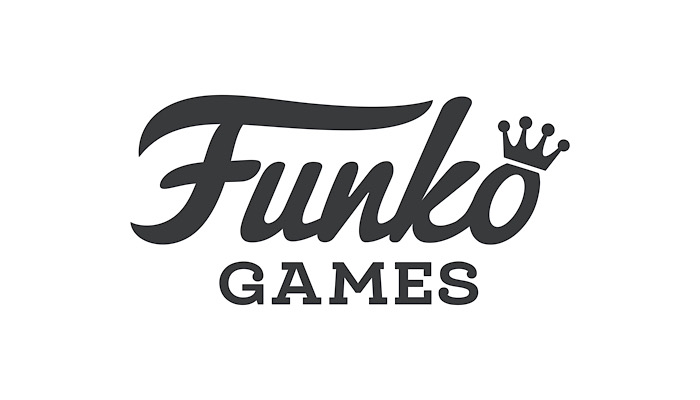What makes Star Trek a perfect license for Funko Games? General Manager Deirdre Cross tells all…

Deirdre Cross! Welcome back. Thanks for joining me.
Thank you, Deej!
So, Star Trek: Cryptic… From what I’ve seen, I love it! It has all the beauty of a tabletop title, but the fun and accessibility of an escape-room style game… Not the most obvious choice for Star Trek, though, is it?
No, not the most obvious choice – but I think it’s a great one! And actually, this is the first time our studio has had the opportunity to work with Star Trek, which might be surprising considering how we’ve been making licensed board games for more than a decade.
That is surprising!
Even so, Star Trek was always a license on our list to make a game for. Once we started working, we quickly decided this should be an escape-room style game, and that we should release it under our Cryptic brand. It was so clear that Star Trek would be a great brand to port into that.
And why is that? Why is Cryptic ideal for – well! Do you prefer Trekkers? Or Trekkies?
I tend to say Trekkies!

Okay! So why is the Cryptic brand an ideal match for Trekkies?
I think Trekkies like a puzzle; they like something to solve… They like a riddle to unravel. We also thought it kind of played into the natural tendency of Star Trek as well. Star Trek has always attracted an intelligent fandom.
Right – a lot of Trek fans are characterised by a sense of the cerebral. And just so people can orientate themselves, in which Trek era is this set?
It’s set in the Next Generation era, which co-exists with Deep Space Nine and Voyager. The reason being that there’s so much content there… For a lot of fans, somewhere in there is their favourite show. Which is not to say that the new stuff that’s coming out now isn’t brilliant and awesome, because I think it is; wonderful content.
In terms of marrying that franchise to boardgame demographics, though, I think you’re probably hitting the sweet spot. So it’s set in that universe, but not – and I think this is an interesting choice – focusing on any of the established characters. Why not?
When we started talking with Paramount, we discussed what our options with characters were quite early on. They told us that we could create completely new characters if we wanted – and a totally new story. We were so delighted! We just had to make sure that the ships, the weapons, the equipment and the star-chartable path fell into the canon.

The star-chartable path?
The flight path that the ships take! That had to fit so fans could actually map where the ship would go; it needed to be accurate. Other than that, we could more or less explore our own space. I mean – we could boldly go…
Ha! Brilliant! Take the rest of the day off!
Ha! I’m done!
Perfect! And that’s very surefooted of Paramount, isn’t it? I mean, that’s quite a lot of freedom for a license of that size and complexity.
It’s amazing. But then, they were incredibly supportive throughout, which is fantastic because – and we’ve talked about this before – when you’re working with a license like Star Trek, that support is invaluable… The people that work on this brand know it better than anyone in the world. So as a Trekkie myself, it’s delightful to work with experts that want you to get things exactly right –
and it’s a delight to learn what IS right.
So… New ships, new characters, new adventures! Tell us a little about how they marry to the gameplay.
The story follows one particular person whom we’ve created. And the booklet here is their personal log. The character’s gender isn’t specified, so anyone is able to play the role of this ensign. Their log starts in their third week aboard the USS Euclid. The whole first story unfolds on that one ship, in that one appointment. But over the course of time, two other stories unfold…

Sealed in these envelopes here?
Right. After the USS Euclid, we go to the USS Dorsey, then to the USS Radiant. Because we’re moving up in rank and being re-assigned… And in real-world terms, that means it’s more than one game; effectively it’s three. So the second part starts on a new ship, with your first shift as a lieutenant. The third starts after another promotion when you’re captain of the USS Dorsey. And of course, your responsibilities increase as you progress – which changes how the story unfolds because having a different rank means making different sorts of decisions.
Great. I’m seeing some neat little details here, Deirdre: the ship’s name plaques, the uniform details… Your art team must be phenomenal. How many are there?
They are phenomenal! How many people work on the art depends on the project… The team expands and contracts to meet the needs of the project. So we have illustrators, artists, and graphic designers all over the world that contribute to projects to make sure we reach big shelf dates.
So is it a case of work surge, then nothing; work surge, then nothing?
No, it’s more work surge, then incredibly busy, then work surge again! Ha! But whereas our Funko Pop colleagues – or game companies that focus more on hobby – might release product every month, their work might more spread out. With a project like this, as you can see, we’re working on a lot. Even the guidebook on it’s own is a significant project! And in terms of playing, this is where you’d start out. The guidebook walks you through the story. Then, the first thing you encounter is an urgent transmission and a puzzle that we have to solve about that.
That’s this word puzzle?
Right. The book also tells you which components you need for each challenge. So, by way of example, this puzzle needs us to write in the book. Well, nobody’s going to want to spoil this book! So it comes with this little transparency – which means it’s reusable. Finally, once you’ve solved a puzzle, the book tells you how many merits you earn along the way… Merits are tokens, basically, with points on them. And if you don’t solve one of the puzzles, then you have to deduct some merits.

I’m very curious to understand, then, Deirdre, with puzzles like these… How do you know when an idea is right? Because your team is going to bring you stuff and say, “I’ve thought of this word puzzle. I’ve thought of a map puzzle…” How do you know when it’s right – not just as a puzzle but right for the feel of this brand?
Well, the team are experts in game making, art and design. I don’t say this lightly – I think our team is absolutely world class. So we’re starting out with a world-class team. And as head of the game studio, what I’m looking for is the entertainment experience… How does playing this make me feel? And how does it make other people feel; people in and out of the fandom?
Now as it happens, Star Trek in particular is a fandom that I love. So then I’m looking for the storytelling… Do I really feel like I’m an ensign on the USS Euclid? Do I have the right level of agency? Do these challenges call in enough of my intelligence? Is this puzzle too easy? Or too hard? Does it LOOK like it’ll be too hard? If so, then I’m disengaging before I start.
Yes. It’s easy to get intimidated or bored by a misjudged puzzle, and you do need people to… Engage.
You also have to consider – ha! Nice! You also have to consider whether there’s enough for everyone at the table to do… Because one person sitting there doing something on their own may not be that entertaining for everyone else! And this is an experience for one or more players… You could play it by yourself and have a great time, but what’s the sweet spot? How does it feel? What should it be like? So that’s more or less where I commit. You have to keep in mind, too, that some people playing the game are going to be huge fans of this franchise – and some people playing it might not be…

People outside the fandom; along for the ride?
Right. And those people outside the fandom might not have seen enough Star Trek or know enough Star Trek to enjoy every detail… So there’s got to be enough going on for somebody who’s only seen “That episode with the Tribbles” and wouldn’t know or care whether these characters use blasters or phasers! It needs to be accessible for someone who knows nothing at all about this universe.
Which is why I think this is so great. It has the authenticity of Trek, but the gameplay is very accessible – so if you don’t know those touch points, it’s still hugely engaging.
Absolutely right.
Let me ask you this: what was the biggest practical challenge with this game?
That’s a great question! I think one of the challenges with this style of game is that we’re trying to create an experience… And the experience has to be fully fleshed out in order to get the flavour of it. So, for example, this game comes with that beautiful book: it has 92 pages and – of course – that has to be exactly right for you to be able to play the game…
Right…
So that book takes months of writing, editing, and development. Now, in our studio, we like to rapidly iterate on things; we like to very quickly get to a straw-man stage; to quickly reach a prototype that we can beat up on. We very quickly want to be pulling it apart: does this work? Is that part fun? Do these things resonate?

You’re looking to rip it apart? Give it your own ‘one-star review’?
Yes – create something that gives us quick feedback against a rapid prototype; something that allows us to fail faster. So – to your question – the most challenging thing about developing the Cryptic product is that we can’t use that methodology! We have to invest a lot more time and resources in getting to each playtest point.
Because – presumably – it takes a long time to develop the individual puzzles, write them up and explain them?
Right. And then if we find something isn’t quite working, we’ve got to scrap all that. There’s another layer of complexity, too, because there are so many puzzles to solve in here, and they all fit together. So more often than not, I’d go into a meeting and – to get that feel right, to feel the story, we’d try six or seven elements that build up this whole experience.
Ah! Yes! You can’t properly playtest individual components out of context!
Exactly… Because that’s where I want to be; I want to be feeling the story from start to finish, and getting the experience – I don’t want to just be solving a puzzle; I want to be arriving at the next part of the game as Ensign Deirdre Cross, still in that universe.
Yes, yes, yes! In the same way that one doesn’t watch the scenes of a movie out order and out of context – then try to review it!
The project was led by game producer Fertessa Allyse. We could trust that she and the team were going to get there… That they were going to make it and and that it was going to be awesome; even if parts of it were played asynchronously and broken into all these different parts… But, as I say, the Funko Games team really is world class – and that meant we could come together and create this experience.

Great answer! And while we’re on this behind-the-scenes sort of insight, I meant to ask you earlier: what factors do you weigh up when you’re considering an IP partner?
There are a number of things. One of the them is the size of the fandom. Sometimes we do things that are more mainstream, other times more niche… Obviously, something like Star Trek has a huge following, and a multi-generational following. We love that! We also look at the competitive marketplace because some fandoms are huge – but already have more than enough games! So is there something special and unique that we can so? Is there a clear path for Funko?
And are there licenses where you look at the IP and think: “Well, we can do something special here. And there IS a fandom… It’s small, but its passionate! Let’s see…”?
Oh, yes. Everything has to pass a litmus test of sorts, but if we think there’s enough resonance around the brands that we’re into, we’ll take a really good look. As a result, there are things that are sometimes very surprising. We’ve made several games for Five Nights at Freddy’s, for example.
Well, that’s a terrific example… Five Nights at Freddy’s has a proper cult following.
A very niche audience, and not a massive generational fandom… But there are a lot of different paths to creating stuff for fans of niche IP. There’s not a set way to get there. So sometimes we’ll do a survey, across the US or Europe, to see if that fandom is interested in a game. We’ll do focus groups where we might put things up on a screen and have people write down how resonant it is.
Write down how resonant it is? They don’t discuss it with you?
No, and that’s interesting! Although, you know, years ago, as Prospero Hall, we made a game around the TV painter and artist Bob Ross. It was called Bob Ross: The Art of Chill. For that, we had a focus group with all these people gathered together. We’re ready to have them write down their thoughts; they were told not to speak… But the moment Bob Ross appeared on the screen, this one guy shouts out, “Shut up and take my money!”

Ha! One Bob Ross super fan!
So funny! It was a really strong reaction – and they’d specifically been told not to speak. He just couldn’t help himself. Now, that isn’t in and of itself enough to know if we want to make a game for it, obviously! Ha! But everybody else wrote down what they liked… It seemed to hit the spot; it resonated with the audience.
You didn’t just sell one copy to that guy?!
Imagine! “We sold one copy, immediately.” No, it’s a beautiful game. I don’t think this story is particularly germane to our Star Trek conversation, by the way, but it’s the example that came to mind.
Oh, I think it’s really helpful – fun example… Maybe I’ll find a connection between Bob Ross and Star Trek to wrap things up. Or maybe I’ll just say, “Deirdre Cross: live long and Prospero Hall.”
Ha! That’s brilliant.
I’ve been sitting on that all afternoon; I want to use it in the headline. Thanks, Deirdre!























